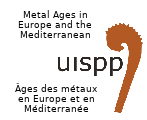The Bronze Age settlement of Sa Osa (Cabras), is one of the few Sardinian archaeological sites which allow us to reconstruct a complete picture on the development of the exploitation of natural resources, agricultural technologies, animal breeding and capture of the early history of Sardinia.
In the village of Sa Osa there are also interesting indications that the local community exploited local resources (e.g. river and sea fishing, pig and cattle farming, deer hunting) and engaged in specialized production activities (e.g. viticulture, pottery, making bone implements).
The rescue excavation at the site of Sa Osa dug for the first time extensively exposed a settlement without any nuragic building and walls, dated to the Middle, Recent and Final Bronze Age.
The settlement consisted of structures made of perishable materials. Now all that remains are elliptical or circular footprints, filled with a rich deposit of ceramics, stone tools and animal remains.
The occupation in the different phases is testified by stratifications of anthropic and sedimentary layers, and also by cylindrical wells and hollows different in shape and size. Most of these wells can be considered as structures for water or food storage. Some dating was performed on samples from different structures and wells.
On the basis of the hypothesis, amply supported by the material culture assemblages of some of the wells, that they were filled in the course of single episodes, we modelled the dates for two wells for which multiple radiocarbon dates are available, structure Kappa-Kappa and structure N. In both cases the OxCal ‘Combine' command gave modelled calibrated dates that were statistically robust, allowing us to date both the fills of structures Kappa-Kappa and N to 1266-1126 cal BC (at 95.4 % confidence). Although the relative sequence of the fills could not be elucidated through the radiocarbon dates, it is clear that both fills are to be situated in the timeframe which is conventionally referred to as the last part of the Recent Bronze Age and the early part of the Final Bronze Age in continental Italy.

 PDF version
PDF version
